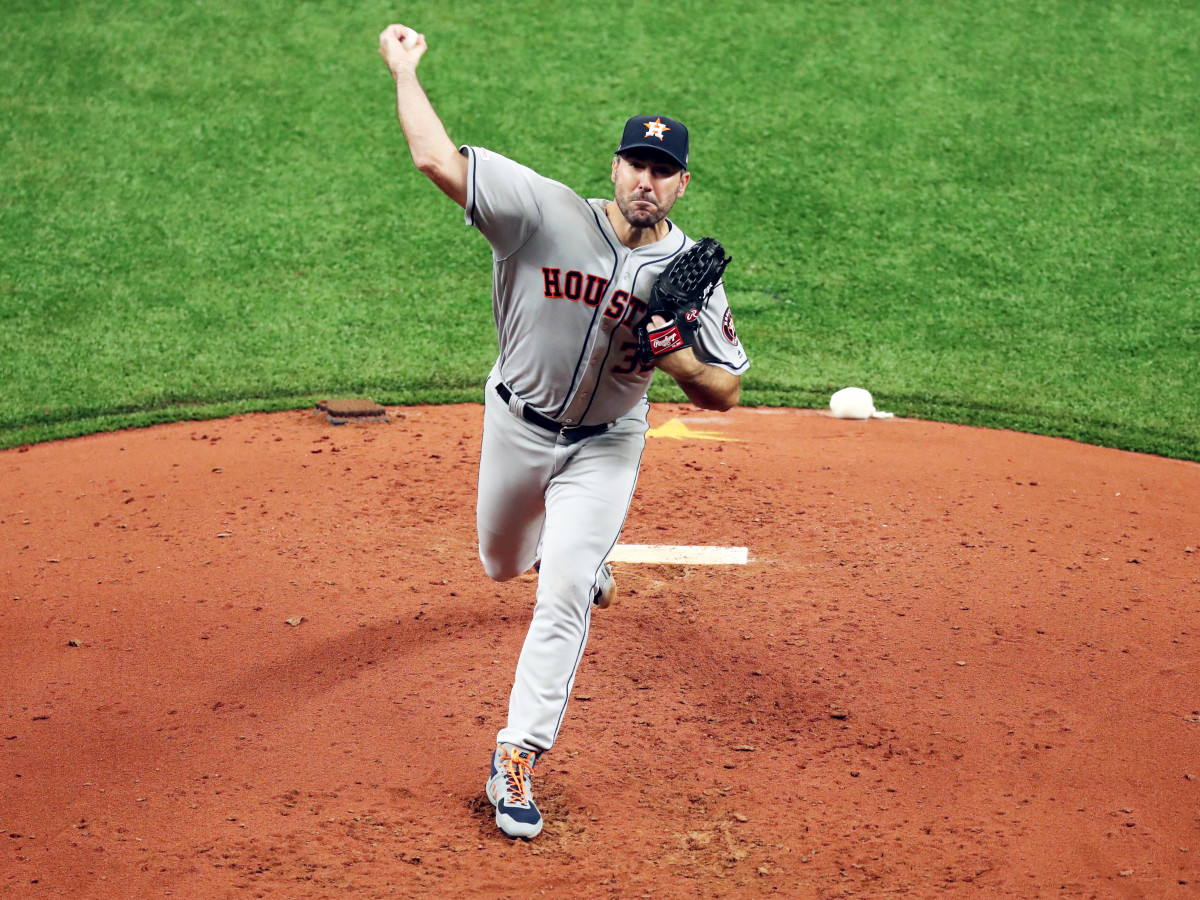The Simple Fix That's Fueled the Astros' Pitching Revolution

OAKLAND — It has become a ritual: A pitcher joins the Astros and the media begins speculating how quickly the team will improve him. The pitcher wonders the same thing. Shortly after he arrives, he strides into a conference room populated by members of the coaching staff and analytics department. When he emerges, eyes wide, he is shaking his head.
His introduction to Houston continues shortly thereafter, when he joins the discussions of pitching philosophy that ace Justin Verlander regularly leads. The new Astro might at that point seek out a position player, just to take a break from all that pitching talk. Too bad. He will soon learn that everyone in the organization is expected to point out possible flaws. Somewhere during this process, his ERA begins dropping.
Said righthanded reliever Ryan Pressly, who arrived from the Twins at last year’s trade deadline, “It was a whirlwind. It’s a lot of stuff to take in.”
Said righthanded starter Gerrit Cole, who joined the Astros from the Pirates before the 2018 season, “If we start seeing a trend in terms of how guys are attacking us or something stands out with a specific hitter, we’re encouraged to have those conversations with the hitting coaches and vice-versa. I’ve gotten plenty of information from non-pitching coaches about my pitching.”
Oh yeah? Like who?
“It’s not about who’s giving the advice.”
Said the righthanded Verlander, who came in 2017 from the Tigers in a blockbuster August 31 deal, “A guy like [deadline acquisition Zack] Greinke who’s been around forever, we’ve been able to, as pitchers, talk to him about some stuff he hadn’t really thought of before.”
Oh yeah? Like what?
“I can’t get too far into that.”

You may find these quotations frustratingly vague. I do, too. The Astros declined most opportunities to be more specific. At one point, as I approached their other major deadline acquisition, Aaron Sanchez, Verlander called, “Don’t tell her anything!” The Astros take pleasure in their growing reputation as the New England Patriots of baseball. Are they cheating, as Reds righty Trevor Bauer has suggested? Or are they just smarter than everyone else? They’d rather their opponents wonder, so they’d rather not say anything at all.
If only there was just a really quick way to increase spin rate. Like what if you could trade for a player knowing that you could bump his spin rate a couple hundred rpm overnight...imagine the steals you could get on the trade market! If only that existed...
— Trevor Bauer (トレバー・バウアー) (@BauerOutage) May 1, 2018
There is a lot going on in Houston, most of it secret. But the irony is that the Astros’ major piece of advice is something my mother, who when recently asked to name an active baseball player offered David Ortiz, could impart: Throw your best pitches more. Throw your worst pitches less.
“It seems pretty simplistic,” said Cole. “And when you just boil it down, it is that simplistic.”
Most of the time, that means asking pitchers to ditch their two-seam fastballs. In an age of swings designed to take advantage of the lower part of the zone, a two-seamer must be elite to be worth throwing. And most pitchers don’t throw elite two-seamers. When Verlander arrived, pitching coach Brent Strom and a few others showed him data: His two-seamer functioned as, essentially, a bad four-seamer. And he already has a very good four-seamer.
“They said, ‘You’re doing the hitter a favor throwing that pitch,’” he said. “I don’t want to do that.” He had already begun to notice that hitters seemed to square it up well, but, he says, no one had told him that the numbers supported his suspicion. So he all but scrapped it.
Cole had a similar experience. No one had ever told him how good his curveball was and how bad his two-seamer was, he said. Pressly said the same. (The Tigers declined to comment; the Pirates and Twins did not return requests for comment.) All three have seen their numbers improve dramatically since their arrivals: Verlander’s career ERA in Detroit was 3.49; in Houston it’s 2.43. Cole’s was 3.50 in Pittsburgh and is 2.84 with the Astros. Pressly’s was 3.75 in Minnesota; it’s 1.95 in Houston. So far the Astros have had less luck with their newest members. Sanchez has struggled—and as of Thursday afternoon will undergo shoulder surgery and miss the rest of the season—and Greinke has been simply human, but the narrative persists: Go to Houston, improve.

It’s odd to think that such an obvious idea—doing more of what works and less of what doesn’t—is so revolutionary, but it seems to be. It’s possible that their former teams tried to make similar suggestions and the pitchers just could not or would not hear them. They don’t think so.
“When somebody gives you some tools to get better, you want to take advantage of them, right?” said Pressly.
Regardless, the narrative has become self-perpetuating. Houston won the World Series in 2017 and looks on pace to do the same this year. Younger pitchers cite the influence of the older ones, especially the ace. Verlander, a certain Hall of Famer who this week threw his third no-hitter, buys in; how could new arrivals not? In the end, it comes down to this: Because pitchers believe the Astros can improve them, they listen to what the Astros say. And then they find themselves improved.
